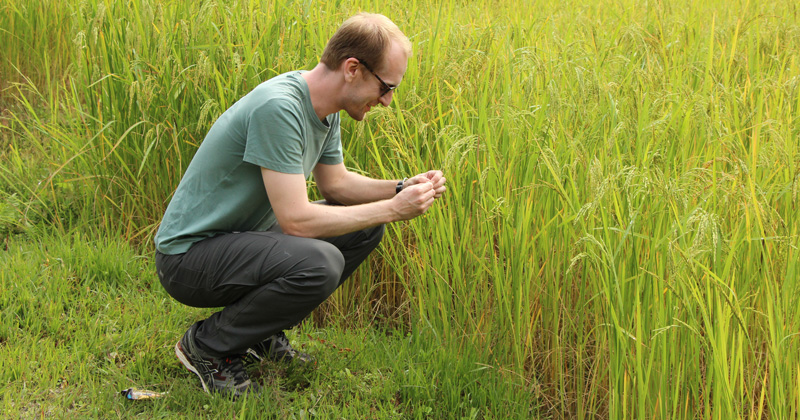
Category: Geography & Spatial Sciences

Connecting Health Impacts
September 22, 2021 Written by Seth Truscott
Scientists connect health impacts from changing climate, air quality, agricultural activities through systems approach
Linking agricultural land use, air quality, and climate, scientists from the US and India offered a new way to understand and minimize health impacts from human-caused changes to our climate and environment.
Co-lead authors Kyle Davis, assistant professor in the University of Delaware Department of Geography and Spatial Sciences, Department of Plant and Soil Sciences, and resident faculty in the UD Data Science Institute, Deepti Singh, assistant professor in the School of the Environment at Washington State University, and Alexandra Karembelas, Columbia University, drew on hundreds of studies of climate change, air quality, agriculture, and public health to propose a “systems lens,” or scientific approach, that connects health risks with simultaneous environmental changes driven by human practices.
The paper, “A systems lens to evaluate the compound human health impacts of anthropogenic activities,” is newly published in One Earth, an academic journal that explores issues of global environmental change and sustainability.
Collaborating with researchers at Washington State University, Columbia University, the Indian School of Business, and Boston University, the authors studied the situation in South Asia, where rapid industrialization and modern farming practices have aided economic development and increased food production, but also compromised multiple dimensions of human health.
The team proposes approaching climate, air quality, and agricultural land use and management as one integrated system for assessing health hazards associated with human activities.
“The health consequences of air pollution, climate change, and transformations in agriculture are often discussed separately,” Singh said. “But these issues are all related—they have similar sources, and each one affects the others. Agricultural activities contribute to air pollution and affect regional climate patterns, while farm production and quality of crops are sensitive to air quality and climate conditions.”
Davis said that the paper came about as he and the other authors were discussing the topics and how they applied to India.
“In northern India, in particular, there is widespread crop residue burning that happens, leading to compromised air quality across much of the region,” said Davis. “We were talking about the connections between agriculture and air quality and there’s obviously impacts of climate change on agriculture. So we got to thinking about how all three are connected using the example of India but keeping in mind that it’s a set of connections that’s true anywhere you might go. Our work sheds new light on the ways that food systems affect, and are affected by, climate change and air pollution.”
Singh said that the paper offers a framework to assess the overall health impacts from multiple parts of Earth’s natural systems and identifies policies and solutions that have multiple benefits for the environmental and human health.
Use of fossil fuels, burning of crop residue—the unused parts of the crop left in a field after harvest—and changes to the landscape from expansion and intensification of agriculture have contributed to extremely poor air quality, changed the main source of rainfall, the summer monsoon, and also increased health risks for nearly a quarter of the world’s population.
More frequent and intense heat waves and floods have killed thousands, displaced millions, lowered labor productivity, and caused disease outbreaks across South Asia. Severe air pollution has contributed to increased heart and lung diseases as well as millions of premature deaths and weakened monsoonal rains. At the same time, air pollution and climate change have reduced yields of important food crops.
The scientists reviewed multiple examples of health impacts from changes in climate, air quality, and agricultural output, as well as co-benefits and unintended consequences of efforts to curb emissions and save water, for example. They share the need for better tools and local, high-resolution data on health, weather, emissions, air pollution, and land use to better measure human and environmental impacts.
“While the climate benefits of reductions in greenhouse gas emissions we make today may not be felt for decades, our approach shines a light on some of the immediate health benefits, as well as unintended consequences, of policies that aim to minimize human impacts on climate and the environment,” Singh said.
A version of this article was originally published by Washington State University.
